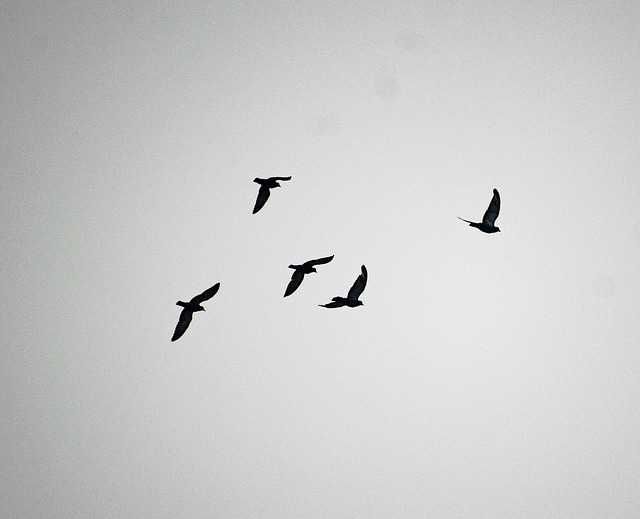Where do pigeons come from?
In the Book of life it is written,
They'll go to Paradise,
Those who have not sinned
And those who were saved.
There are many reasons why we can say that pigeons are peculiar birds. Probably, along with sparrows, pigeons are among the most famous species of wild birds in the world. The pigeon was essential in Darwin's studies, it maintained extraordinary cultural significance. Its role as a model organism spans the fields of behavior, genetics, and evolution. Archaeological evidence indicates that both Neanderthals and later Homo sapiens consumed rock pigeons for food. Mentions of pigeon breeding on artifacts from Mesopotamia and in Egyptian hieroglyphs indicate that we humans domesticated the species — for use as a food source — at least in 4,500 i.Hr. Animal mummies were common in Ancient Egypt and were used in religious ceremonies, often as offerings. Millions of mummified animals have been found, most dating back to around 600 î.Hr. up to 250 d.Hr. the ancient Egyptians believed in many gods and associated different animals with them. In ancient Egypt, birds used as votive offerings were prepared by gutting and drying, then soaked in molten resin and wrapped. However, sometimes the birds were not gutted, giving researchers a chance to take a look at a particular bird's life before it died. Only DNA analysis was able to conclusively determine how much hybridization occurred in a population, and many populations remain insufficiently studied. The original Pigeon is a species known as the rock pigeon, Columba livia and is part of the family Columbidae. Its closest relative is the similar-looking Hill pigeon Columba rupestris. The rock pigeon is the wild ancestor of the domestic pigeon, Columba livia domestica. Humans have kept and selected domestic pigeons for thousands of years, resulting in over 1,000 different breeds. Over the centuries, escaped domestic birds have added their eclectic genes back into the wild population, which is why wild pigeons come in a wide variety of colors. Some varieties have such bizarre plumage that they look just as similar to their wild ancestor.
The purest populations of rock pigeons exist where geographical barriers reduce hybridization. So wild pigeons are a hybrid between the original rock pigeon and domestic pigeons and are found everywhere in cities and the countryside, but not much is known about them. Wild pigeons have a distinctive and consistent pattern of feathers. They have pale gray triplets, two dark bands on the wings, and iridescent green and purple feathers along the neck and chest. They have orange eyes, pink legs and white ceres at the top of their beak. Males and females look very similar, except that females have less iridescence on the neck. Pigeons are the only birds that can suck water when they drink (the other birds must take water in their beak until they fill their mouths, then throw their head back so they can swallow it). Empirical studies support the idea that different spatially distributed ratios in the gradients of volatile organic compounds provide pigeons with information about the direction of travel. Pigeons have the ability to fly at altitudes above 1500 meters, and the maximum speed they reach is between 80 and 110 kilometers per hour. Both humans and pigeons learned matching, where a sample stimulus indicates which of the two stimuli matches the sample. Captured, moved and released pigeons fly back to their coops, even though they are hundreds of miles away from home. Called a" locating instinct, " this behavior allowed humans to use pigeons to steer sailors ashore and transmit messages over great distances. The use of messenger pigeons continued even into modern times, where birds were used in the first and Second World Wars to send messages from the front line and even to rescue stranded troops.
Wild pigeon populations are threatened by rooting with wild birds, and some ornithologists believe there are few, if any, true rock pigeon populations left. Therefore, domestic animals have been important culturally and economically throughout history. There is no conclusive evidence of the effectiveness of systemic macromutations or an explanation of the irreversibility of morphophysiological complications in pigeons. Even the theory of dotted equilibrium has not yet provided answers to these questions. The morphological characteristics and size of individuals change with allometric changes. Many of their ancestral lineages are extinct or genetically threatened following hybridization with domesticated relatives. Consequently, they have been insufficiently studied compared to the ancestral lines of domestic plants.
We dedicate this article in memory of our pigeons Cai Lun, Nei Gong and the family of Jupiter, who knew Titilica. Thank you and forgive us!
